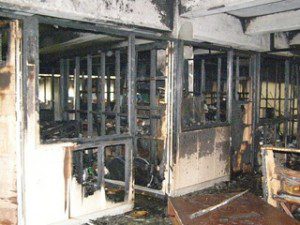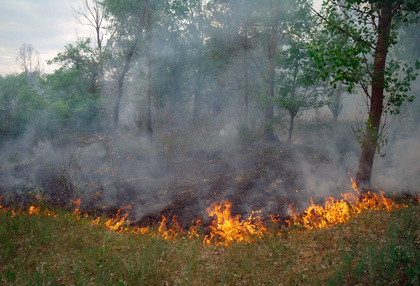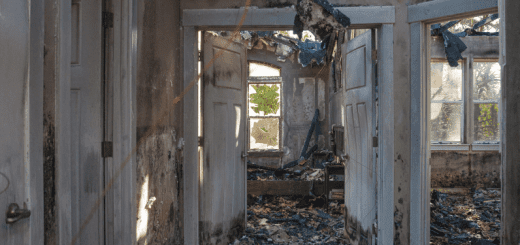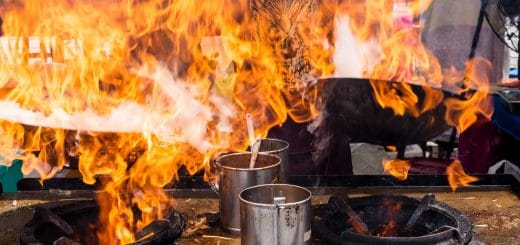Tips for Dealing with Soot Damage

SootSoot is fine black particles composed of carbon and other ma... More damage can continue to spread even after the fire is out.
SootSoot is fine black particles composed of carbon and other ma... More is the black residueResidue is any leftover material, such as soot, dust, or che... More left behind on fireplace walls and charcoal grills after the flames go out. A house fire creates a great deal of it because wood, plasterPlaster is a building material made of lime, gypsum, or ceme... More, natural fibers, synthetics, foams, and plastics all create sootSoot is fine black particles composed of carbon and other ma... More when they burn and most homes are full of these materials. SootSoot is fine black particles composed of carbon and other ma... More sticks to any surface that’s cooler than the fire itself, usually walls, ceilings, and other hard surfaces.
Different types of fires produce different types of sootSoot is fine black particles composed of carbon and other ma... More, which require different cleaning methods, so it’s best to leave it to the professionals. High oxygenOxygen is a chemical element essential for combustion and li... More fires produce sootSoot is fine black particles composed of carbon and other ma... More that is best cleaned with a dry cleaning spongeA sponge is a porous material used to absorb liquids or clea... More or dry chemical spongeA sponge is a porous material used to absorb liquids or clea... More. Low oxygenOxygen is a chemical element essential for combustion and li... More fires can be cleaned with a wet spongeA sponge is a porous material used to absorb liquids or clea... More. However, if sootSoot is fine black particles composed of carbon and other ma... More from a high oxygenOxygen is a chemical element essential for combustion and li... More fire is cleaned with a wet spongeA sponge is a porous material used to absorb liquids or clea... More, it can smear and cause even more damage. If you do decide to vacuum up sootSoot is fine black particles composed of carbon and other ma... More before the professionals arrive, do not use an ordinary household vacuum cleaner, which is not designed for that type of cleaning. Use a shop vac or other types of a heavy-duty vacuum cleaner. Always hold the nozzle about a half-inch away from the surface that’s being cleaned. Making contact with the sootSoot is fine black particles composed of carbon and other ma... More can smear it and make an even bigger mess.
While waiting for experts to arrive, there are a few things to keep in mind.
- Never touch anything during your initial inspectionInspection is the careful examination and assessment of a pr... More, to avoid spreading the sootSoot is fine black particles composed of carbon and other ma... More.
- Wear gloves, a mask, and long sleeves and pants when working in a soot-covered room to protect your skin and lungs.
- Keep the room ventilated to minimize breathing in sootSoot is fine black particles composed of carbon and other ma... More particles and allow smoky smells to dissipate.
- Remove as much debris as possible to allow for easy cleanup.

quality fire damage restorationFire damage restoration is the process of repairing and rest... More services
If you’ve just experienced a fire at your home or business, call the professionals at RestorationMaster We can start work within three hours of your initial call. We begin with a structural evaluation of the building, including the roof, walls, flooring, and insulationInsulation is a material used in buildings to reduce the tra... More. Smoke and water damage restorationWater damage restoration is the professional process of clea... More is included in our fire cleanup service.
SootSoot is fine black particles composed of carbon and other ma... More damage cleanup prices vary, depending on the extent of the damage and how far it has spread in the home. According to HomeAdvisor.com, the national average in 2015 was $5,338.












